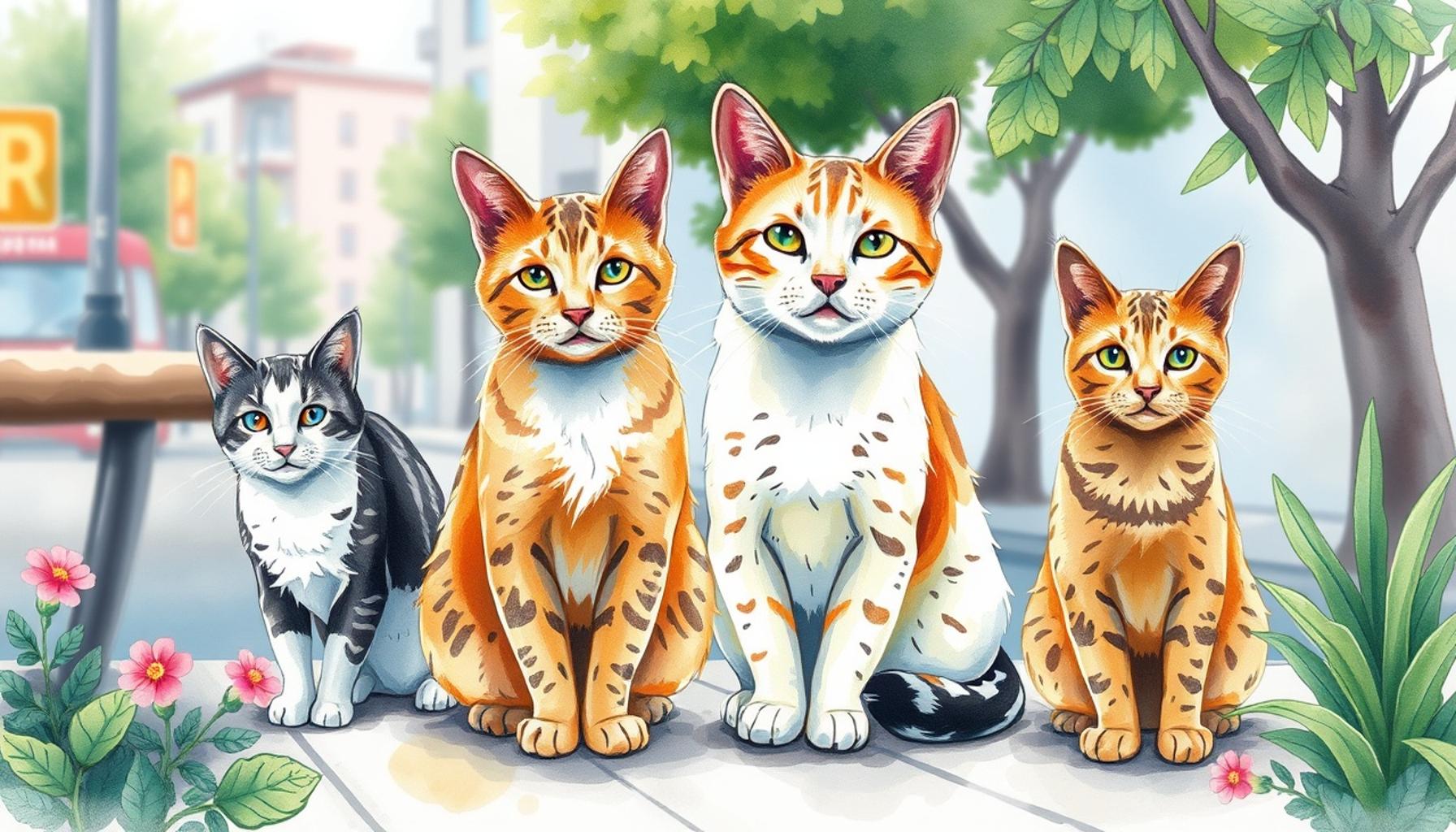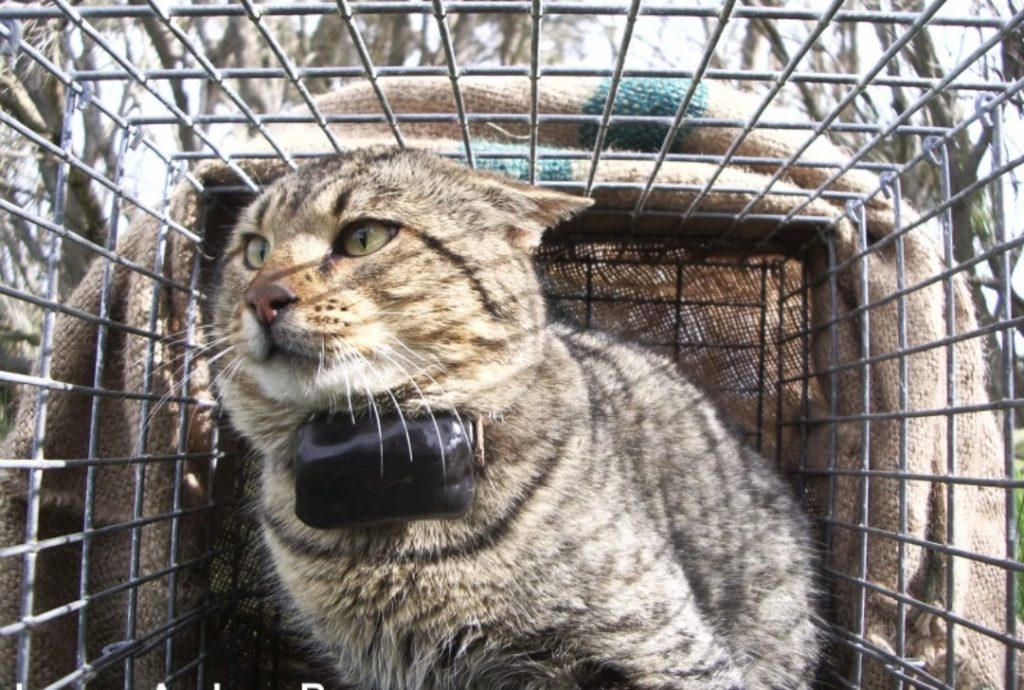Effective Behavioral Training Techniques for Cats in Urban Environments

Understanding Urban Cat Behavior
In vibrant cities like Lagos, where the cacophony of honking cars and bustling markets never fades, your feline friend is bound to face a plethora of distractions. These urban settings create a unique environment that requires thoughtful and strategic behavioral training, fostering a harmonious coexistence between your pet and the chaotic world outside. Cats are inherently curious creatures, but the myriad of stimuli in city life can overwhelm them, making effective behavioral training techniques all the more critical for their well-being.
Why Training is Essential
The advantages of training your cat go far beyond enforcing basic compliance. Here are a few pivotal reasons to engage in the training process:
- Enhanced Safety: A trained cat is less prone to risky behaviors that could lead to accidents, such as darting into traffic or engaging in altercations with other animals. Proper training teaches them to recognize boundaries and navigate their surroundings safely.
- Stronger Bond: Training enhances communication, establishing a deeper connection between you and your pet. For instance, teaching your cat to respond to its name or sit on command can lead to rewarding interactions and trust-building moments.
- Positive Environment: A well-trained cat contributes to a more peaceful home. When your cat understands acceptable behaviors—like refraining from scratching furniture or knocking items off shelves—it leads to reduced stress for both the pet and the owner, fostering a sense of calm amid urban chaos.
Challenges of Urban Environments
Living in an urban environment presents specific challenges for cat owners that can affect their pets’ behavior. Key factors include:
- Limited Space: In densely populated areas, small living quarters can restrict a cat’s natural exploratory instincts. Without room to roam freely, your pet may feel confined, leading to anxiety or boredom.
- Distractions: The constant noise from traffic, construction, and crowds can disrupt a cat’s sense of security. The movement of people and other animals can create stress, making behavioral training even more crucial to help your cat cope.
- Less Natural Instinct: Urban living often limits opportunities for cats to engage in instinctual behaviors such as hunting or climbing. As a result, many cats may exhibit frustration or exhibit destructive behaviors if these natural instincts are suppressed.
To create a well-adjusted feline companion in such a bustling environment, embracing specific training techniques is vital. Methods such as clicker training, which reinforces positive behaviors with rewards, can transform training sessions into enjoyable activities. Positive reinforcement, which encourages desired behaviors through treats or praise, can also significantly improve your cat’s quality of life while adapting to the vibrancy of city life.
By employing these strategies, you can ensure that your cat thrives amid the excitement and noise of Lagos, allowing them to flourish as the adaptable urban companions they are meant to be. With dedication and patience, training can turn urban living into an enriching experience for both you and your furry friend.

CHECK OUT: Click here to explore more
Effective Training Techniques for Urban Cats
To navigate the complexities of urban living, where the familiar sounds of chirping birds are often drowned out by the blaring horns of vehicles, specific behavioral training techniques become essential for pet owners. Using these techniques not only enhances your cat’s adaptability but also nurtures their natural instincts amidst the urban hustle. Below are some highly effective strategies that can turn your feline companion into a well-adjusted city dweller.
Clicker Training: A Modern Approach
One of the most popular and effective training methods is clicker training. This technique utilizes a small device that makes a unique clicking sound to reinforce positive behaviors. The simplicity of clicker training is its main appeal—when your cat performs an action you desire, you click the device and immediately reward them with a treat. This method helps your cat make clear associations between their behavior and positive reinforcement.
- Start Simple: Begin with basic commands, such as “sit” or “come,” to gradually build your cat’s confidence in responding to authoritative cues.
- Short Sessions: Keep training sessions brief (5-10 minutes), as cats have shorter attention spans. This helps maintain their interest and prevents frustration.
- Consistency is Key: Use the clicker consistently across different settings and situations. Your cat will learn to associate the click with positivity, regardless of the urban environment they are in.
Positive Reinforcement: Rewarding Good Behavior
While clicker training focuses on the auditory cue, positive reinforcement relies on rewarding desirable behaviors, which can be particularly effective in urban settings. This method encourages cats to repeat favorable actions by offering treats, praise, or playtime. Here’s how to make it work:
- Immediate Rewards: Timing is crucial. Offer rewards immediately after your cat exhibits the desired behavior so they can make the connection.
- Use Varied Rewards: Keep your cat engaged with a mix of treats, verbal praise, and play to maintain motivation. Rotate between different rewards to prevent boredom.
- Create a Safe Space: Designate a quiet area in your home where you can conduct training. This helps minimize distractions, allowing your cat to focus better on learning.
Environmental Enrichment: Keeping Urban Cats Happy
In a city where space is limited, enriching your cat’s environment can help satisfy their natural instincts. Provide climbing structures, scratching posts, and interactive toys that encourage activity and mental stimulation. Creating a more engaging habitat can reduce anxiety and prevent behavioral issues caused by confinement.
Incorporating these techniques can transform the life of urban cats, ultimately leading to a more balanced existence amidst the challenges of city living. By committing to behavioral training, pet owners can create a thriving environment filled with trust, understanding, and harmony between themselves and their feline companions.
| Training Technique | Advantages |
|---|---|
| Positive Reinforcement | Encourages desired behaviors by rewarding cats, enhancing learning and building trust between pet and owner. |
| Clicker Training | Provides a clear and consistent method for communicating with your cat, effectively bridging the gap between human and feline interaction. |
| Desensitization Techniques | Helps cats adapt to urban stimuli, reducing anxiety and enabling them to feel more comfortable in their environment. |
Urban environments can be overwhelming for cats, filled with various sounds and activities that may induce stress. Each of these techniques not only promotes behavioral improvement but also fosters a better bond with your feline companion. Moreover, implementing these training methods can lead to improved overall wellbeing for your cat, making them feel secure and happy in busy urban settings. To delve deeper into how these techniques can be adjusted to meet your cat’s unique personality, consider observing their reactions and adapting training strategies accordingly. Implementing a combination of these practices can lead to a well-adjusted, confident urban cat who thrives in their home environment.
ADDITIONAL INSIGHTS: Expand your understanding here
Innovative Strategies for Urban Cat Training
Training cats in urban environments necessitates an understanding of their unique challenges and instincts. Beyond traditional methods like clicker training and positive reinforcement, there are several innovative strategies designed specifically for the urban feline. These techniques not only aid in behavior modification but also promote a healthy and enriching lifestyle for cats living in bustling cities.
Harness Training: Adventuring Outside Safely
Many urban cats benefit from harness training, which allows them to explore the outside world safely while under the supervision of their owners. This technique can open avenues for physical activity and mental stimulation. To get started with harness training:
- Choose the Right Harness: Select a fitting harness that comfortably secures your cat without slipping. It should be lightweight yet durable, ensuring your cat’s safety during exploration.
- Acclimatization Period: Allow your cat to wear the harness indoors first, gradually increasing the duration. This helps them get used to the sensation and become more comfortable before venturing outside.
- Leash Training: Once your cat is accustomed to the harness, introduce a leash while encouraging them to wander in your backyard or similar safe outdoor space. Begin with short distances and progressively increase exposure to urban environments.
Studies have shown that outdoor exploration can enhance a cat’s well-being, providing them with an array of new smells and sights—essential for their natural curiosity and mental health.
Desensitization to Urban Noises
One common challenge for cats in urban areas is the overwhelming array of noises. From honking cars to loud construction sounds, these elements can cause anxiety. Desensitization is an effective training technique that can help cats adapt to such environments:
- Gradual Exposure: Begin by exposing your cat to recorded sounds of urban noise at a low volume while they are in a safe space. This allows them to associate these sounds with a calm environment.
- Pairing with Positive Reinforcement: While the sounds are playing, reward your cat with treats or engage them in play. This creates positive associations and helps alleviate their stress response over time.
- Increase Volume Gradually: As your cat becomes more tolerant of the sounds, slowly increase the volume. Monitor their reactions and ensure they remain relaxed—if they show signs of distress, reduce the volume.
Continued practice with urban sounds can build your cat’s resilience, making them more adaptable to noisy situations when they arise in day-to-day life.
Interactive Toys and Puzzle Feeders: Mental Stimulation
Urban cats may often feel bored or anxious when left alone. Introducing interactive toys and puzzle feeders can significantly improve mental activity and deter destructive behaviors. Here’s how they can be beneficial:
- Stimulating Hunting Instincts: Provide toys that mimic prey behavior, encouraging your cat to engage in natural hunting behaviors indoors. This not only helps them stay active but also satisfies their instinctual needs.
- Reduce Overeating: Puzzle feeders can slow down their eating pace by requiring effort to release food. This encourages problem-solving skills while maintaining a healthy diet.
- Regular Rotation: To keep your cat engaged, frequently rotate the toys and feeders to maintain their novelty and captivate their interest.
Incorporating these innovative training techniques into your routine can significantly enhance your cat’s well-being and adaptability to the urban lifestyle. By focusing on their physical, mental, and emotional needs, owners can ensure that their feline friends thrive in a bustling city environment.
CHECK OUT: Click here to explore more
Conclusion: Nurturing Urban Cats for a Balanced Life
Training cats in urban environments requires a thoughtful approach that addresses their distinct needs and challenges. By integrating innovative techniques such as harness training, desensitization to noise, and the use of interactive toys, cat owners can effectively enhance their feline companions’ quality of life. Each strategy not only helps in modifying behavior but also fosters a sense of security and curiosity that is vital in bustling city settings.
As urban dwellers navigate the complexities of city life, it becomes crucial to provide enrichment that aligns with their cats’ instincts and natural behaviors. Harness training, for instance, can lead to safe outdoor exploration and increased physical activity, while desensitization techniques can ease anxiety in response to urban sounds—an important aspect for our feline friends living in noisy environments.
Moreover, mental stimulation gained from interactive toys and puzzle feeders can keep cats engaged, reducing boredom and destructive behaviors often associated with indoor living. This holistic approach empowers cat owners in Nigeria, where urban life presents a unique blend of excitement and stress, to cultivate adaptable and balanced pets.
In conclusion, embracing these effective behavioral training techniques not only enhances the relationship between cats and their owners but also ensures that these beloved animals can thrive amidst the vibrant chaos of urban life. By adopting a proactive and informed mindset, any cat owner can create a supportive environment that fosters happiness, health, and harmony for their furry companions.



